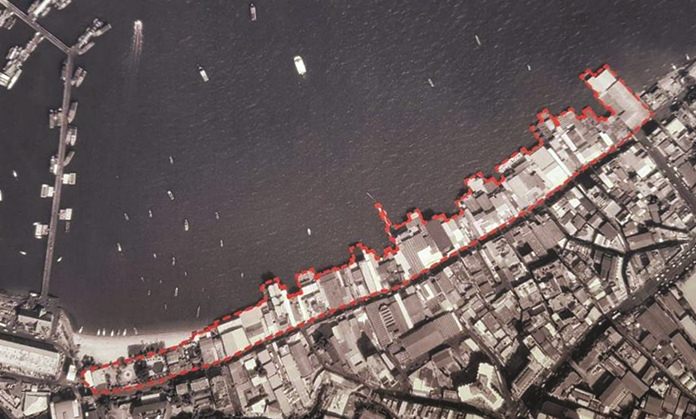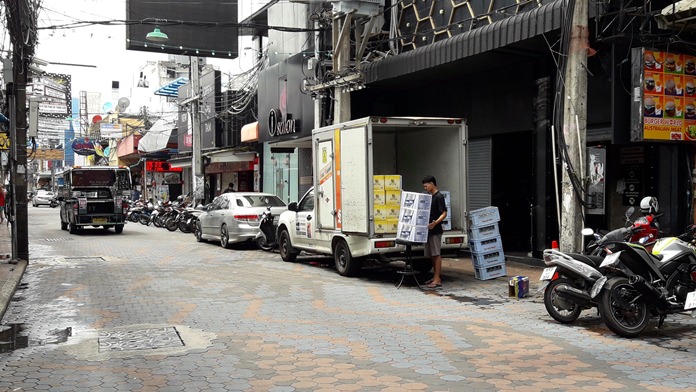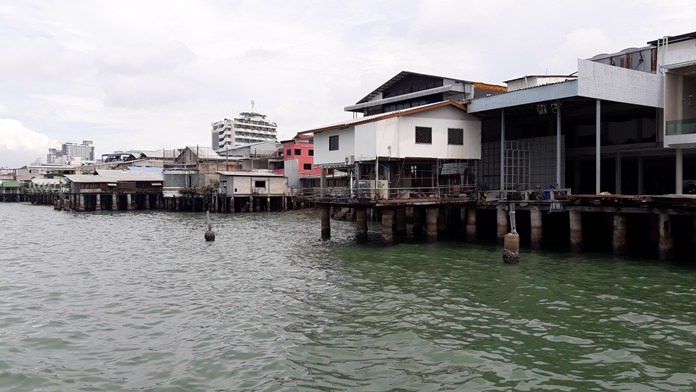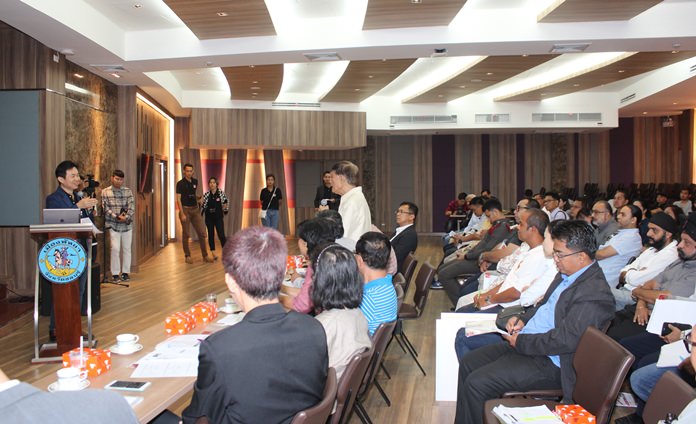Pattaya officials have revived talk of demolishing the ocean side half of Walking Street to create a coastal parkland, but the same objections that have stalled the plan for 20 years quickly resurfaced as well.

Former Pattaya mayors, current city council members, tourism officials and business leaders were present Oct. 6 when consultants from Silapakorn University outlined four options to redevelop Walking Street to provide more public space, convenience and solve the problem of private property encroaching on public land.
Three of the four options were viewed as “nuclear” choices, basically calling for the waterfront side of the popular nightlife strip to be leveled and rebuilt. Only Option 2 – removing only those structures extending 40 meters from Walking Street onto public land – gained even a smidgen of support.

Silapakorn study leader Nattawut Preeyawanit said that as early as 1988, 101 structures were deemed to be encroaching on public land and have been targeted for years for demolition. But the impact on tourism that demolishing so many of the bars and restaurants would have repeatedly has scuttled any action.
Nonetheless, university researchers continued their work on a 1.5-billion-baht redevelopment plan, which included an examination of all the infringing structures’ documents and the determination that a majority of them were not properly registered.
The most recent legal action in the case – which goes back more than 20 years – came in May 2015 when then-Deputy Mayor Ronakit Ekasingh said 12 Walking Street buildings had been ordered demolished for illegally extending their property.

Ronakit said then that basically the entire western side of Walking Street has been built illegally on government land, but due to land-title issues, officials could only move against 12 buildings that violated their original building permits. The property owners were given a chance to appeal and the order was never mentioned again.
A royal decree on land expropriation issued April 17, 2014 confirmed the findings of the 1998 Japan International Cooperation Agency report. But owners of those properties, including some of Pattaya’s wealthiest and politically connected families, stalled any move to demolish the buildings even as Walking Street grew into Pattaya’s best-known and most-lucrative tourist attraction.
Even now, despite the military government’s crusade against public-land encroachment – some city leaders appear loathe to do anything that will jeopardize Pattaya’s tourism cash cow.
Komklit Prasitnalit of the Pattaya Business & Tourism Association insisted that only the second option – targeting structures extending 40 meters from Walking Street – be considered.
Option 1 reiterates the 1988 finding that the waterfront side of Walking Street be demolished and turned into a public park and marina using a 1.5-billion-baht budget.

Option 3 and 4 are similar in also calling for all encroaching structures to be removed, but with differing development plans of 1 billion baht and 500 million baht, respectively.
Ram Singh, a Walking Street business owner, also said Option 2 was the only workable solution as the encroaching structures needed to be removed anyway. However, tearing everything down was senseless, would cost a fortune and have a long-running negative impact on tourism, he said.

Other business operators stood up and said they were aware of the encroachment concerns, but that Walking Street was too important of a tourism attraction and tearing it down would greatly damage tourism and Pattaya’s economy.




